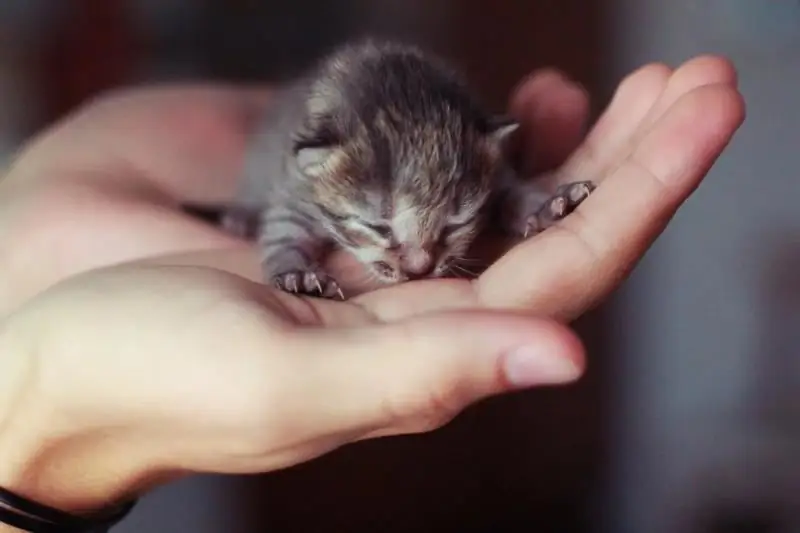
Table of contents:
- Author Bailey Albertson [email protected].
- Public 2023-12-17 12:53.
- Last modified 2025-06-01 07:32.
Feeding a kitten without a cat

In a number of situations, for example, with postpartum complications in a beloved cat or as a result of an accidental discovery, a person turns out to be the owner of a small blind kitten or even several. It will not be easy to feed them on your own, but even from such a serious situation you can come out as an unconditional winner.
Content
-
1 Rules for feeding a newborn kitten without a cat
- 1.1 Feeding mode
- 1.2 Calculation of the required amount of formula for feeding
-
2 What is needed to feed a kitten
-
2.1 Arrangement of a nest for a kitten left without a mother
2.1.1 Temperature conditions
- 2.2 Necessary items for feeding
-
2.3 Feeding rules
1 Video: how to bottle feed a kitten
-
2.4 Kitten hygiene
2.4.1 Video: how to help a kitten to go to the toilet
-
-
3 How to choose a milk replacer
3.1 Video: how to make a mixture for a kitten yourself
-
4 How to feed a month-old kitten without a cat
-
4.1 How to train a month old kitten to eat independently
4.1.1 Video: first feeding kittens
- 4.2 Natural food
- 4.3 Prepared feed
-
4.4 What you can't feed a month-old kitten
4.4.1 Video: when and what to feed small kittens
-
-
5 Kittens weight gain
5.1 Table: body weight of a kitten, depending on its age
- 6 Recommendations from veterinarians
Rules for feeding a newborn kitten without a cat
For the correct growth and development of a kitten, the feeding regime, which depends on age, is of great importance. A person who picked up a baby on the street will have to navigate by the following criteria:
-
the presence of an umbilical cord - the kitten is less than 3 days old, since it is at this time that it disappears;

Kitten with umbilical cord If the umbilical cord does not fall off the kitten - it is less than three days old
-
eyes:
- closed - less than a week;
- open, but the palpebral fissure is still narrowed - the kitten is 2-3 weeks old;
- change of eye color from blue to green - age 6-7 weeks, but if the kitten is blue-eyed breed, there will be no change in eye color;
-
ears:
- seem very small, pressed to the head - less than one week old;
- the auricle is completely open - 2 or 3 weeks;
-
weight - on average, a kitten weighs 100 g at birth, adds 10 g of body weight every day of his life:
- kittens of the first week of life weigh 100-150 g;
- in the second week - 150-170 g;
- in the third week - 170-225 g;
- in the fourth week - 225-250 g;
- at the 7-8th week - 680-900 g;
-
teeth:
- no teeth - the kitten is less than 2 weeks old;
- there are milk incisors - the kitten is 2-4 weeks old;
- milk teeth - 3-4 weeks;
- milk premolars - 4-8 weeks;
- permanent teeth - 4 months or more;
-
movement:
- uncertainty and staggering when walking - the kitten is about 2 weeks old;
- the kitten is stable - more than 3 weeks;
- moves confidently - 4 weeks;
- runs fast - 5 weeks;
- good coordination of movements - 7-8 weeks.

Sometimes the age of a kitten can only be found approximately
Feeding mode
Compliance with the feeding regime is vital for young kittens deprived of their mother's milk and care:
- the first week of life, the kitten is fed every 2 hours;
- the second week - every 3-4 hours;
- the third week - 6 times a day;
- until the age of 2 months, the kitten continues to be fed 6 times a day, switching to 5 meals a day at 2 months.
Calculation of the required amount of formula for feeding
When preparing and feeding the mixture, one should be guided by the annotation that the manufacturer applies to its product, but an average calculation can be given:
-
Determination of daily requirement:
- Age 1 week - 30 ml per 100 g of kitten weight.
- Age 2 weeks - 35 ml per 100 g of kitten weight.
- Age 3 weeks - 40 ml per 100 g of kitten weight.
- Age 4 weeks - 48-53 ml per 100 g of body weight of a kitten.
- Determination of the single volume of the formula for feeding: the daily requirement is divided by the number of feedings.
An important criterion for assessing the effectiveness of feeding is the well-being of the kitten:
- the kitten looks tight;
- the kitten's behavior is calm, he does not squeak between feedings;
- gains weight every day by 10 g;
- the chair is decorated, light brown;
- the mucous membranes are moist and pink.
What is needed to feed a kitten
To successfully feed a kitten without a cat, the following basic elements are necessary:
- nutrition - its composition and feeding regime, as well as compliance with some rules for feeding;
- temperature regime - kittens do not have the opportunity to effectively carry out thermoregulation, and therefore they are prone to hypothermia;
- hygiene - kittens need help to urinate and defecate; it is necessary to monitor the cleanliness of their fur and den.
Arrangement of a nest for a kitten without a mother
The kitten needs a constant temperature regime, and external stimuli are also undesirable for him, so a den should be arranged for the baby:
- You can take a thick cardboard box or something else as a basis.
- Cover the bottom with a dense material for thermal insulation, for example, a blanket, put a disposable diaper on top.
-
Cover the box with a warm woolen cloth on top.

Kitten den The kitten den should be warm and safe.
Temperature regime
Maintaining the desired temperature in the den is possible using:
- incandescent lamps located above the den;
- bottles of hot water, tightly closed and wrapped in a towel so as not to burn the kitten;
- regular heating pads, also covered with a towel.
When installing a heating device, it is important to leave one corner of the den free from it. In this place, the kitten will hide if it gets hot.
Temperature range:
- during the first week of a kitten's life, the temperature of the den is maintained at the level of 27-32 o С;
- the second week - 27-29 o C;
- successively lower third, and fourth week, the temperature to the end of 4 weeks it had reached 24 on S.
Essential items for feeding
To feed a kitten you will need:
- milk formula bottles;
-
nipples;

Bottle for kittens A bottle for kittens with nipples is on sale in a veterinary pharmacy
-
alternative to nipple bottle:
- syringe without a needle - it is convenient to dispense the mixture, which can be fed directly from the syringe;
- soft catheters with side holes, they are put on a syringe and used to feed kittens;
- plastic vials with pipettes from under drugs, very carefully washed;
- mixing bowl or jar.
Feeding rules
When feeding, it should be borne in mind that:
- the mixture should be warm, it is possible to check, dripped in the crook of the elbow, or wrist, the optimal temperature of the mixture - 38 to C;
- the remains of the mixture can be stored in the refrigerator, but not more than a day;
-
to prevent aspiration (liquid entering the kitten's respiratory tract):
- avoid the use of devices for feeding a kitten with wide holes;
- the mixture for feeding the kitten is not served under pressure, the kitten sucks it himself, and the person only helps;
- when feeding, the kitten is belly down;
- if the kitten does not eat the calculated volume, the number of feedings should be increased;
- bottle feeding kitten hold at 45 on;
- after feeding, gently massage the kitten's abdomen, helping him to regurgitate the air that got during feeding;
- it is necessary to monitor the cleanliness of the kitten's feeding equipment (devices are sterilized);
-
Keeping a log of observation of a kitten, where the amount of food, weighing results and other indicators are entered, will be very helpful.

White kitten drinks from a bottle Kittens are fed belly down
Video: how to bottle feed a kitten
Kitten hygiene
The immunity of a kitten left without a cat is very weak. Therefore, the person who has taken responsibility for the baby must strictly adhere to the rules of care:
- For the first three weeks of a kitten's life, he needs to massage the abdomen and perianal region in order to induce urination and defecation. This is done using a damp linen napkin. Massage should be done after each feeding.
- The diaper on which the kitten is located should be dry and clean, it should be changed more often (daily or as it gets dirty).
- The skin of a kitten's abdomen is prone to irritation. To prevent it, wipe it with baby oil, if irritation occurs, use baby powder.
- They always prepare food for the kitten, and also feed and care for him only with clean hands and in clean clothes, in which there was no contact with other cats, since a baby growing without a mother does not have colostral immunity, and he is not yet capable of producing his own antibodies.
Video: how to help a kitten to go to the toilet
How to choose a milk replacer
Given the uniqueness of the composition of cat milk, veterinary substitutes that are close to it in terms of nutrient content are best suited as its replacement. In addition to the main nutritional ingredients, quality milk substitutes contain:
- vitamins;
- trace elements;
- taurine;
- minerals;
- polyunsaturated acids (omega-3; omega-6).
The following are commonly referred to as reliable products:
- Beaphar Kitty-Milk;
- Royal Canin Babycat Milk;
- Gimpet Cat-Milk.
Video: how to make a mixture for a kitten yourself
How to feed a month old kitten without a cat
A month-old kitten should be fed independently. At the same time, the owner must decide on the further diet of the kitten, whether it will be ready-made industrial food or natural food.
To teach a kitten to eat from a bowl first liquid, and then more solid food, you can start from 3 weeks, when the baby's eyes are already open, he hears well and moves independently.
How to train a month old kitten to eat independently
When teaching a baby to self-feed, they act as follows:
- The milk mixture is poured into a saucer and the cat is brought to it.
- Dip your fingers in the mixture and let the kitten smell and lick them.
- If the kitten does not immediately understand what to do, scoop up a small amount of the mixture with a teaspoon and drip it onto the kitten's tongue.
It is quite possible that the kitten will not start eating on its own at the first attempt - if the owner shows gentleness and patience, he will do it without fail.
Video: kittens' first feeding
Natural food
When feeding a kitten with natural food, each new product is introduced once every 3 days in order to track the reaction of the baby's body to an unfamiliar product. It is important to immediately accustom the kitten to a varied diet in order to prevent him from avoiding any types of food useful for him in the future.
To feed a month-old kitten use:
-
very thin porridge cooked in milk or meat broth from:
- buckwheat;
- millet groats;
- rice;
-
boiled minced meat from:
- lean beef;
- a rabbit;
- chicken breast;
- turkeys;
- boiled fish without bones;
- quail eggs;
-
dairy products:
- kefir;
- plain yogurt;
- curdled milk.
Finished feed
From ready-made feeds, they choose products for kittens from reputable manufacturers. Baby foods are also called starters.

Solid food is introduced when the kitten can already eat liquid food from the saucer
Good manufacturers of kitten food are:
- Orijen;
- Josera;
- Arden Grange;
-
Purina Pro Plan;

Purina Pro Plan for kittens Expensive dry food for kittens is a balanced diet enriched with vitamins and minerals
- Eukanuba;
- Royal Canin.
Food is offered to a kitten when he already knows how to lap milk mixture from a bowl, while the granules must be soaked in it. As the kitten grows, the amount of formula in the food is reduced so that by the age of 8-10 weeks it can eat completely dry food.
Both when feeding with ready-made feed, and with natural feeding, a kitten must have free access to clean drinking water.
What you can't feed a month-old kitten
A small kitten cannot be fed:
- food leftovers from a person's table;
- products containing spices, salt, sugar;
- expired, spoiled food and rancid feed;
- sausages, smoked meats;
- fish with bones not removed;
- raw meat and fish;
- pork in any form;
- fatty foods;
- chocolate and cocoa;
- citrus fruits, peaches and grapes;
- legumes.
Video: when and what to feed small kittens
Kittens weight gain
A kitten's weight gain is an important indicator of its health, growth and development. On average, a kitten should add 10 g per day, kittens of large breeds (Maine Coon, Norwegian cat and others) can gain 15 g per day.
The kitten should be weighed up to the age of 2 weeks every day, from 2 to 4 weeks - once every 3 days, then you can switch to weekly weighing until the end of the growth period of the kitten. The weight of a kitten, as well as the rate of its gain, depends on the expected weight of an adult animal, which is determined by its sex or breed.
Table: body weight of a kitten, depending on its age
| Kitten age | Body mass |
| at birth | 60-160 g |
| 1 Week | 110-260 g |
| 2 weeks | 140-360 g |
| 3 weeks | 200-600 g |
| 4 weeks | 240-750 g |
| 2 months | 400-1700 g |
| 3 months | 1.0-2.5 kg |
| 4 months | 1.7-3.9 kg |
| 5 months | 2.2-5.5 kg |
| 6 months | 2.3-6.0 kg |
| Seven months | 2.4-6.5 kg |
| 8 months | 2.5-6.9 kg |
| 9 months | 2.5-7.0 kg |
| 10 months | 2.5-7.7 kg |
| 11 months | 2.5-8 kg |
| 12 months | 2.5-9 kg |
| Adult animal | 2.5-10 kg |
Veterinarian recommendations
For a small kitten growing up without a mother cat, human-provided nutrition, warmth and grooming are critical. If it is impossible to find out the exact age of the baby, general average development criteria for kittens are used. The kitten should be placed in a prepared den, which provides protection from drafts, irritants and maintains a constant temperature. The kitten is fed with veterinary cat milk substitutes, following the manufacturer's recommendations. The criterion for the effectiveness of feeding is the stable weight gain of the kitten, which is controlled by regular weighing. Up to 3 weeks, it is necessary to massage the kitten's abdomen to send them physiological needs, keeping the kitten clean to avoid infection of the baby due to the indirect transmission of infections from other cats.
Recommended:
Is It Possible To Feed A Kitten With Adult Food: What Is The Difference Between The Composition, Recommendations Of Veterinarians
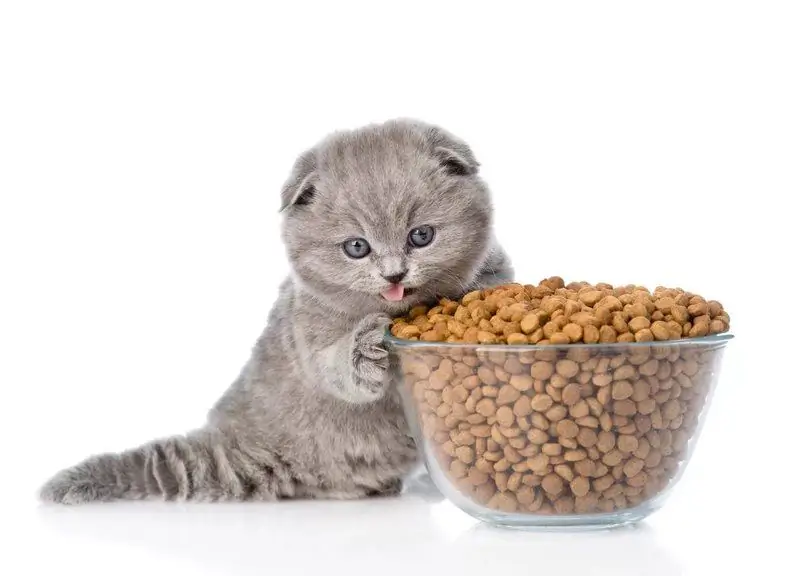
The main differences in the composition of food for kittens and for adult cats. Is it possible to give a kitten a diet marked Adult. When to transfer a pet to adult food
Is It Possible To Soak Dry Food For Cats And Cats: Features Of Soaking For Adult Animals And Kittens, Recommendations Of Veterinarians
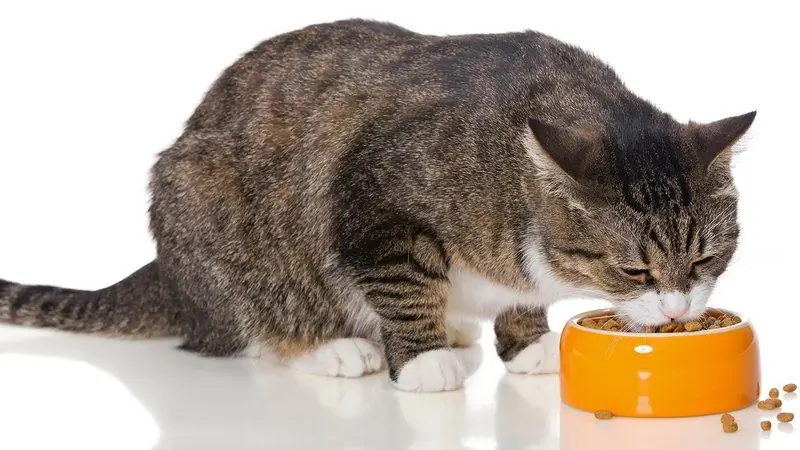
Is it possible and when it is necessary to soak dry food for cats and kittens, how to do it correctly, is it possible to store soaked food. Veterinarian recommendations
Renal Failure In Cats And Cats: Symptoms, Treatment, How To Save A Kitten And An Adult Animal (recommendations Of Veterinarians)
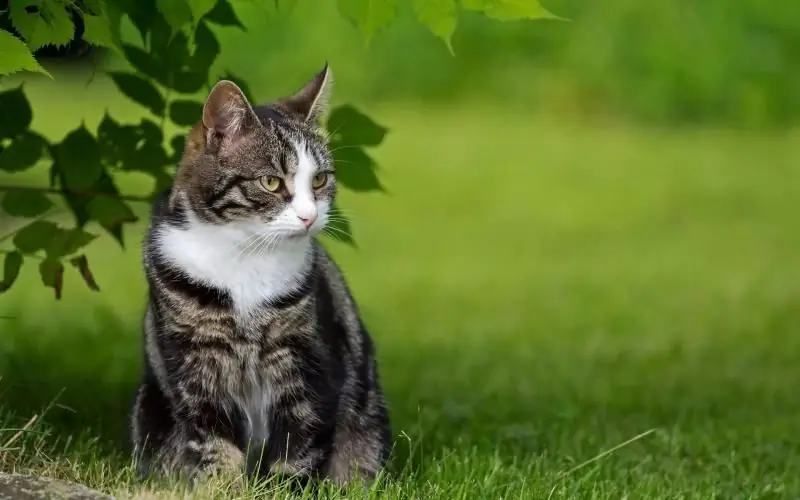
Types of renal failure in cats The reasons for its development. How pathology manifests itself and is diagnosed. Inpatient and home treatment. Prevention
Eosinophilic Granuloma In Cats: Symptoms And Treatment At Home, Prevention And Recommendations Of Veterinarians
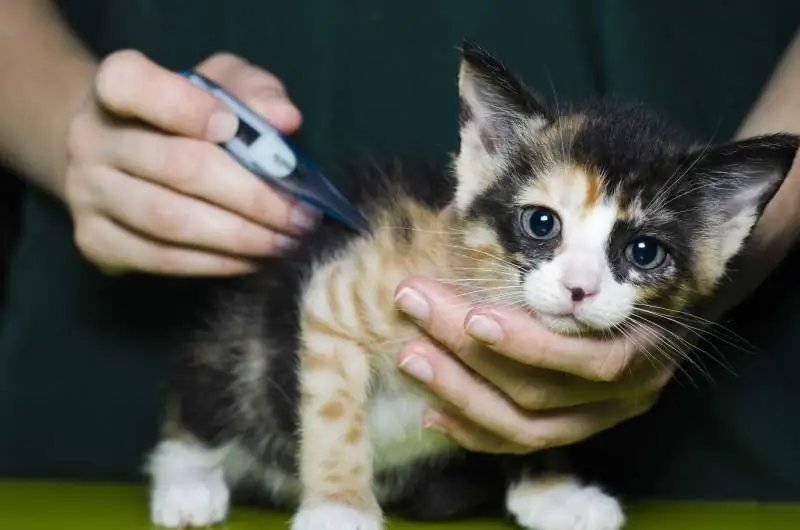
How does eosinophilic granuloma of cats look and proceed? Causes, diagnosis, prevention and treatment methods. Veterinarian recommendations
Enteritis In Cats: Symptoms, Diagnosis And Treatment (including At Home), Prevention, Recommendations Of Veterinarians
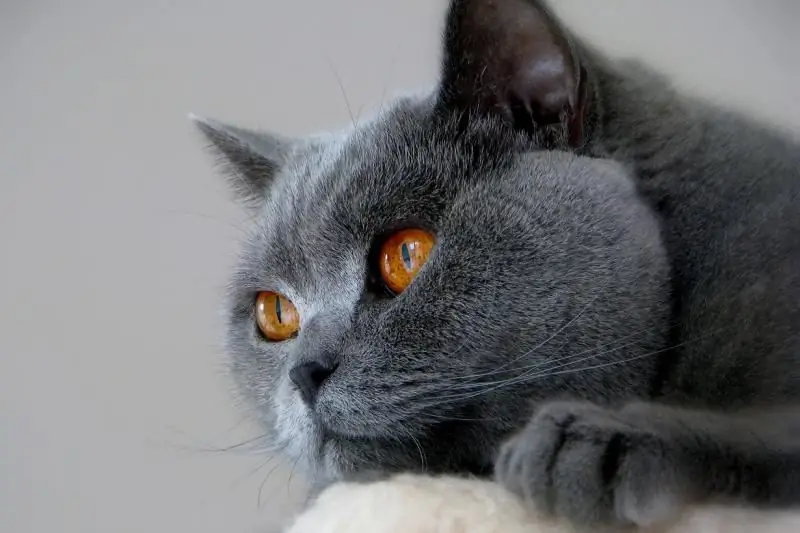
What is viral enteritis. Infection routes. Types of the disease. When to see your veterinarian. How to treat at home. Prevention. Doctor's advice
